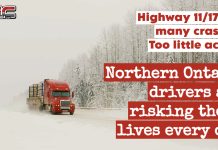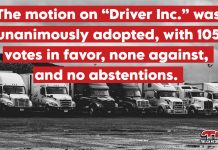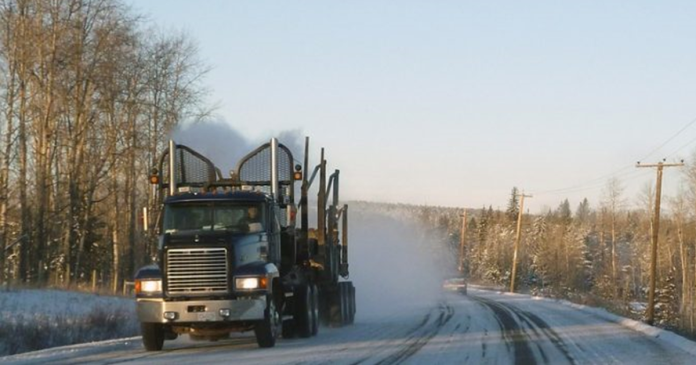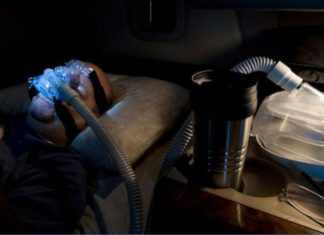Concrete solutions are needed to improve training standards, strengthen inspections, and ensure accountability among transport stakeholders, with the aim of securing our roads and saving lives.
Highway 11/17, a vital route in northern Ontario, is increasingly raising concerns over road safety. This section of the Trans-Canada Highway, reduced to a single lane in each direction, presents serious challenges for road users, and truckers, who are becoming increasingly wary of traveling on this route.
Some trucking professionals have even chosen to leave their jobs to avoid driving in this area, while others demand higher pay to compensate for the heightened risks, underscoring the gravity of the situation.
Inadequate Infrastructure
One of the main issues is the lack of passing lanes and safe shoulders along much of Highway 11/17. This configuration restricts options for evasive maneuvers and increases the risk of head-on collisions. Additionally, the scarcity of adequate rest areas forces drivers to travel long distances without safe places to stop, leading to driver fatigue and increasing the likelihood of accidents.
In cases of breakdowns, truckers find it nearly impossible to pull over without their vehicles encroaching on the lane, as the shoulders are often too narrow to accommodate heavy trucks. This issue becomes even more concerning in winter, when snow accumulation further restricts maneuvering space and creates hazardous conditions for all road users.
Training and Oversight of Commercial Vehicle Drivers
The insufficient training of some truck drivers is another significant safety concern. Investigations have revealed that certain driving schools fail to meet required standards, producing drivers who lack the skills, experience, and knowledge necessary to operate heavy trucks safely. Compounding this issue, some fraudulent training centers have even been found issuing licenses to individuals through dishonest means, further jeopardizing road safety. This situation is exacerbated by a lack of rigorous oversight of driver qualifications. While these shortcomings lead to incidents and tragedies on Highway 11/17, their effects resonate nationwide, with fatal accidents unfairly claiming the lives of road users.
Policy Initiatives and Reform Demands
The Ontario New Democratic Party (NDP) has recently voiced concerns over the underutilization of the Shuniah inspection station—a $30 million infrastructure investment made as part of the Ford government’s plan to improve road safety in northern Ontario.
According to Lise Vaugeois, MPP for Thunder Bay–Superior North, this station plays a crucial role in ensuring that commercial vehicles meet safety standards. Positioned strategically on Highway 11/17, this station should serve as a mandatory checkpoint for westbound drivers. However, staffing shortages mean it is often closed, significantly limiting its effectiveness in ensuring road safety on this high-risk route.
The NDP also calls for an equitable distribution of resources for winter road maintenance, highlighting that Highway 11/17 does not receive the same level of service as Ontario’s 400-series highways. This disparity, frequently criticized by truckers, leaves drivers facing dangerous winter conditions, which amplifies the risks on an already hazardous route.
These safety concerns should not be used for political gain. Regardless of party affiliation, ensuring road user safety must be a top priority for all elected officials and citizens. Protecting lives transcends partisan interests, and every stakeholder involved in these decisions shares the responsibility of creating a safer road network for everyone.
Proposed Solutions for Enhanced Safety
Advocacy groups like “Hwy 11/17 kills people” are calling for concrete actions to make this route safer. Some of the suggested solutions include:
- Enhanced Inspection Stations: Inspection stations should expand their checks beyond basic weight and cargo security to include rigorous assessments of driver qualifications and licenses. This requires specialized training for inspectors to identify invalid licenses and training deficiencies.
- Creation of a National Database: Establishing a centralized database to collect and share information on drivers, transport companies, and training institutions would enable better oversight and swift identification of non-compliant entities. This database could also play a vital role in identifying incorporated drivers and the companies that employ them, an aspect crucial for authorities. By cross-referencing data from roadside inspections with fiscal agency records, authorities could better detect companies exploiting this status to avoid certain tax and legal obligations. This system would also help target drivers with compliance issues, contributing to a safer road network for everyone.
- Stakeholder Accountability: It is essential to hold institutions and individuals responsible for issuing non-compliant licenses, as well as employers who hire undertrained drivers, financially accountable for their negligence in road safety. This accountability would create a safer work environment for drivers while offering greater protection to all road users.
While these measures primarily target Highway 11/17, they should be implemented nationwide to improve safety across Canada’s road network. Collaboration among local authorities, transport companies, and advocacy groups is critical for creating sustainable, effective solutions that will ultimately ensure safer driving conditions for everyone.
Although these solutions may not address every challenge, they provide a starting point to tackle part of this vast and complex issue and represent an essential first step in saving lives.
Read more :
- Road Safety on Highway 11/17 Remains a Priority for Ontario’s Provincial NDP
- Young Ontario Truck Driver Faces Up to Two Years in Prison for Hit-and-Run Accident
- Driver Inc : Despite Minister MacKinnon’s Promises, the Trucking Industry Calls for Action
- Eric Gignac, CEO of Guilbault, Condemns the Injustice of the Driver Inc. Model
















